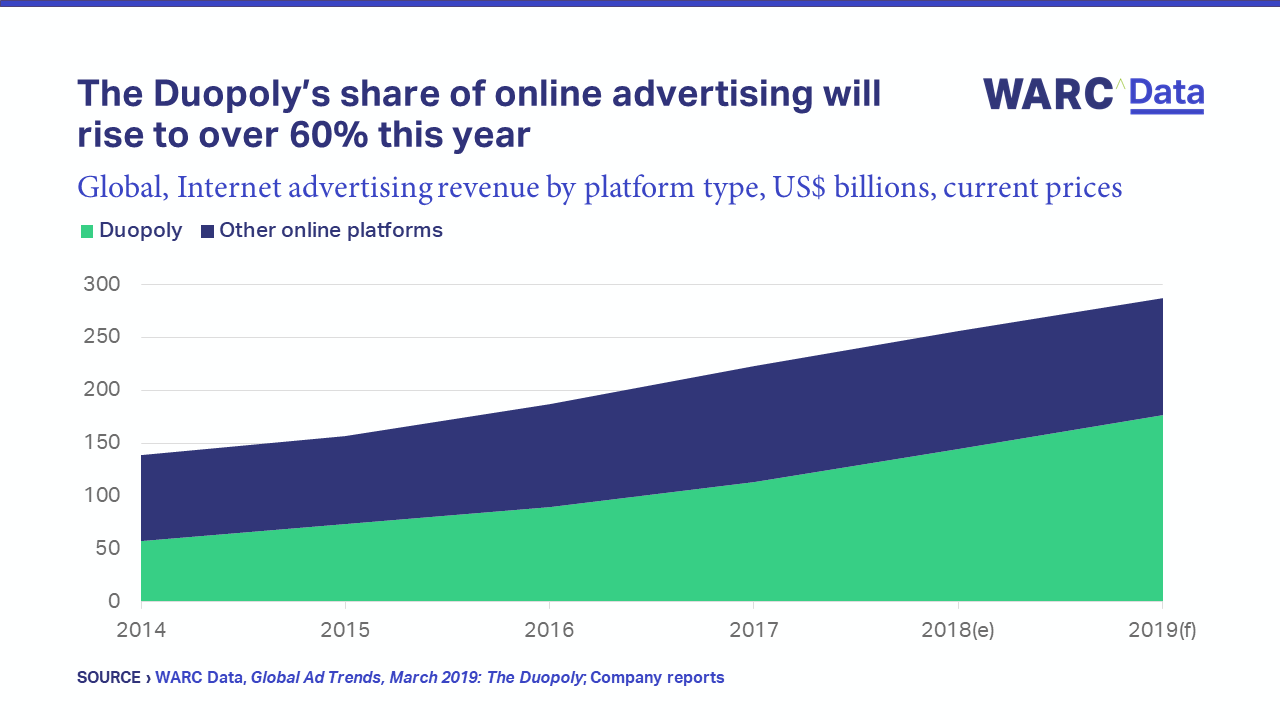The latest WARC Global Ad Trends focuses on the duopoly and says that of the $590.4bn spent on advertising worldwide last year, $144.6bn (24.5%) went to Google and Facebook, which equates to almost one in four dollars.
The duopoly’s adspend share is up from 20.3% in 2017 and is more than double the 10.8% recorded in 2014. WARC predicts a further increase to 28.6% ($176.4bn) this year.
Looking only at the internet advertising market, the duopoly took over half (56.4%) of ad money in 2018, a share which WARC expects to rise to 61.4% this year.
This growth is squeezing other online media owners, as the pool of ad money available to them is now in decline for the first time, down 0.7% to $111.0bn.

Other trends noted in Global Ad Trends: The Duopoly include:
- Google and Facebook are competing directly for video dominance: both hope to unlock brand budgets while also controlling the trade of targeted performance advertising.
- Google is battling Amazon on two fronts to defend its search market dominance: Amazon is developing its own search business, looking to pair advertisers with consumers close to the point of purchase, and has also stolen a march in voice search.
- Younger Americans are leaving Facebook’s core platform for Instagram: marketers are following them. Facebook is responding by pivoting to an encrypted messaging service to regain consumer trust, and to build a secure environment for online payments.
“Google dominates the search engine market, handling almost all mobile searches worldwide and nine in ten on desktops. Meanwhile, ad buyers can target Facebook’s 1.48bn daily users by leveraging a rich cache of personal data,” he added.
“Beyond major brands, the accessibility of the duopoly’s ad buying tools has attracted a long tail of small- and micro-advertisers, creating a competitive advantage which has been core to revenue growth.”
Sourced from WARC
